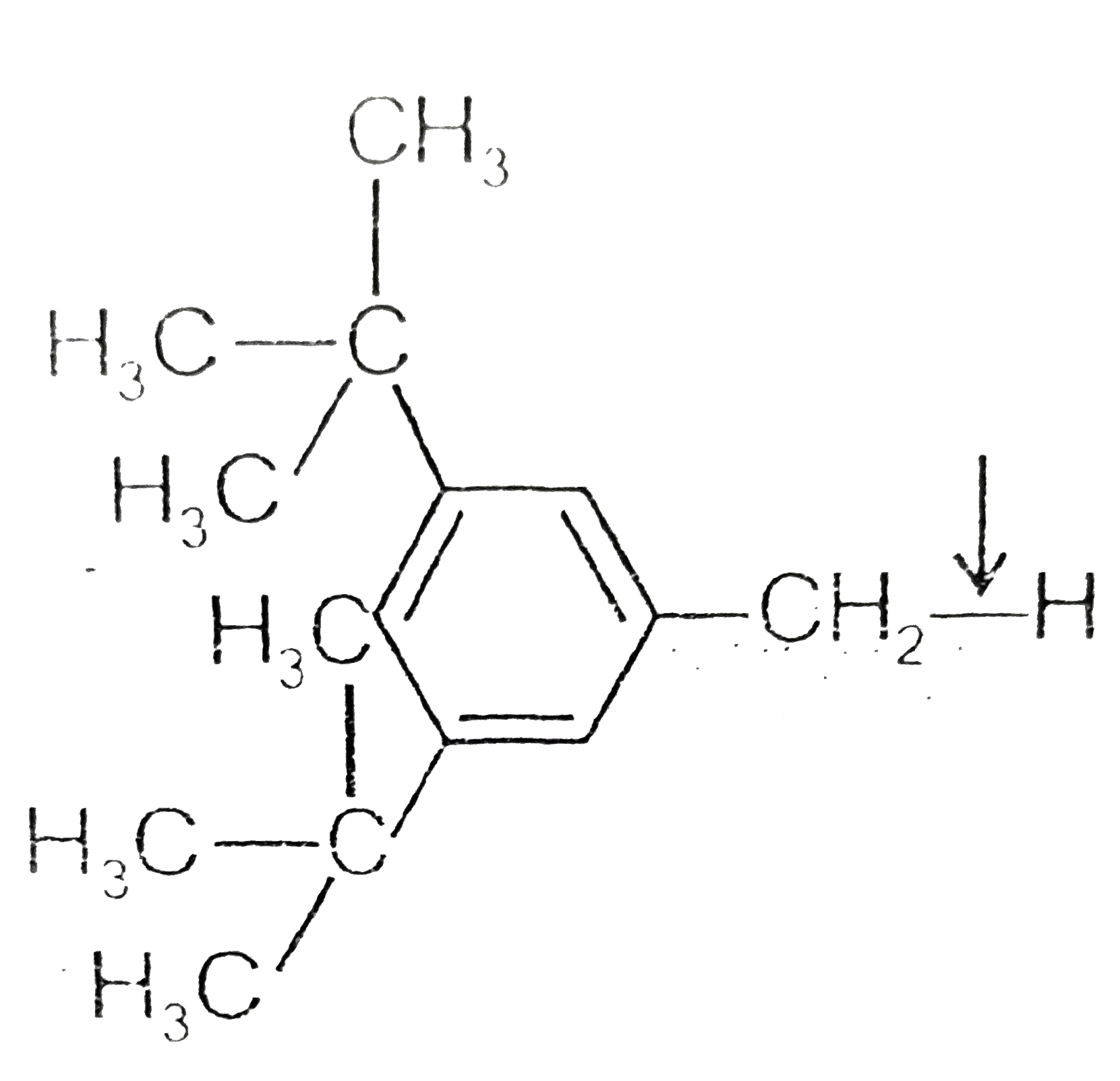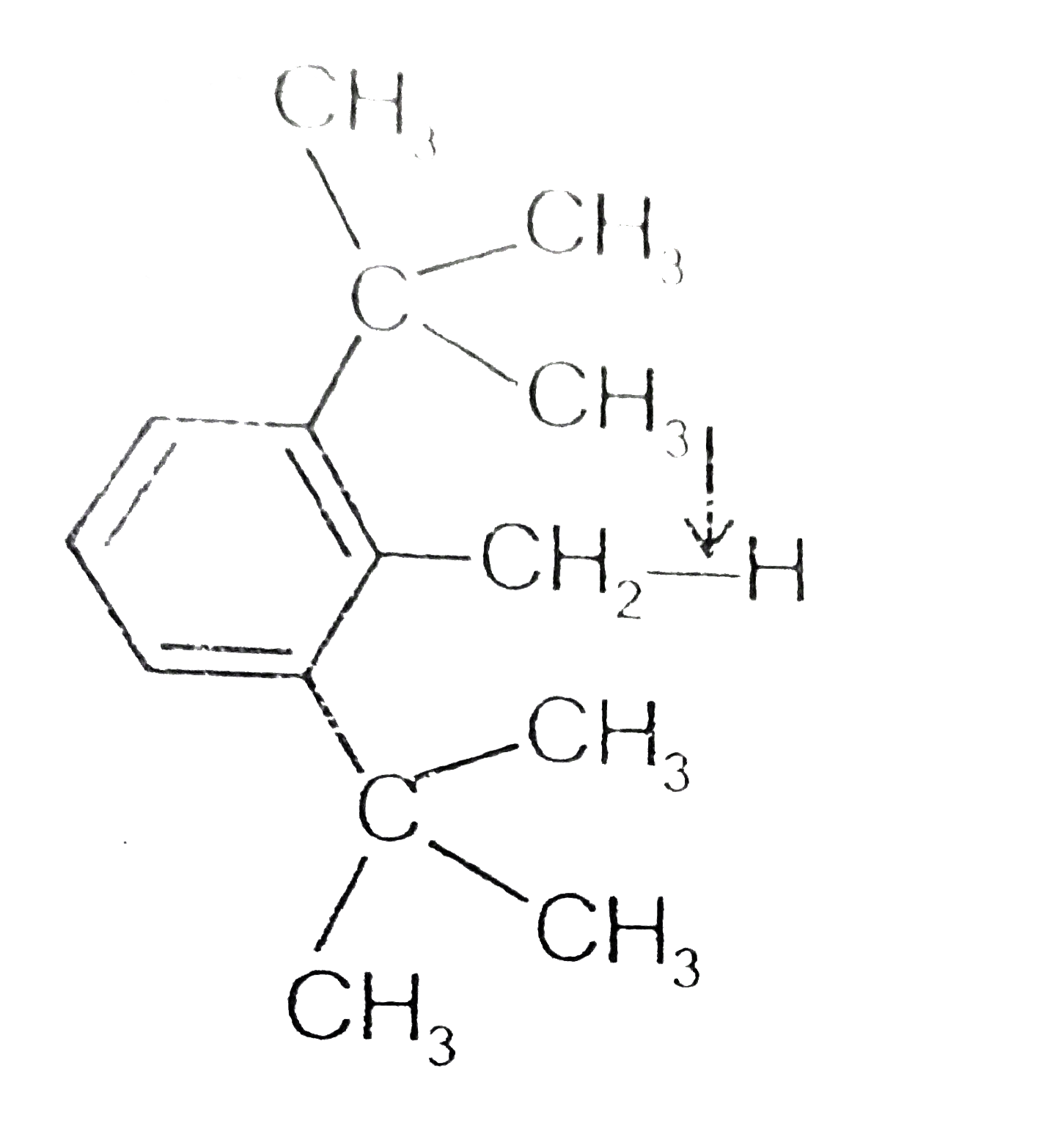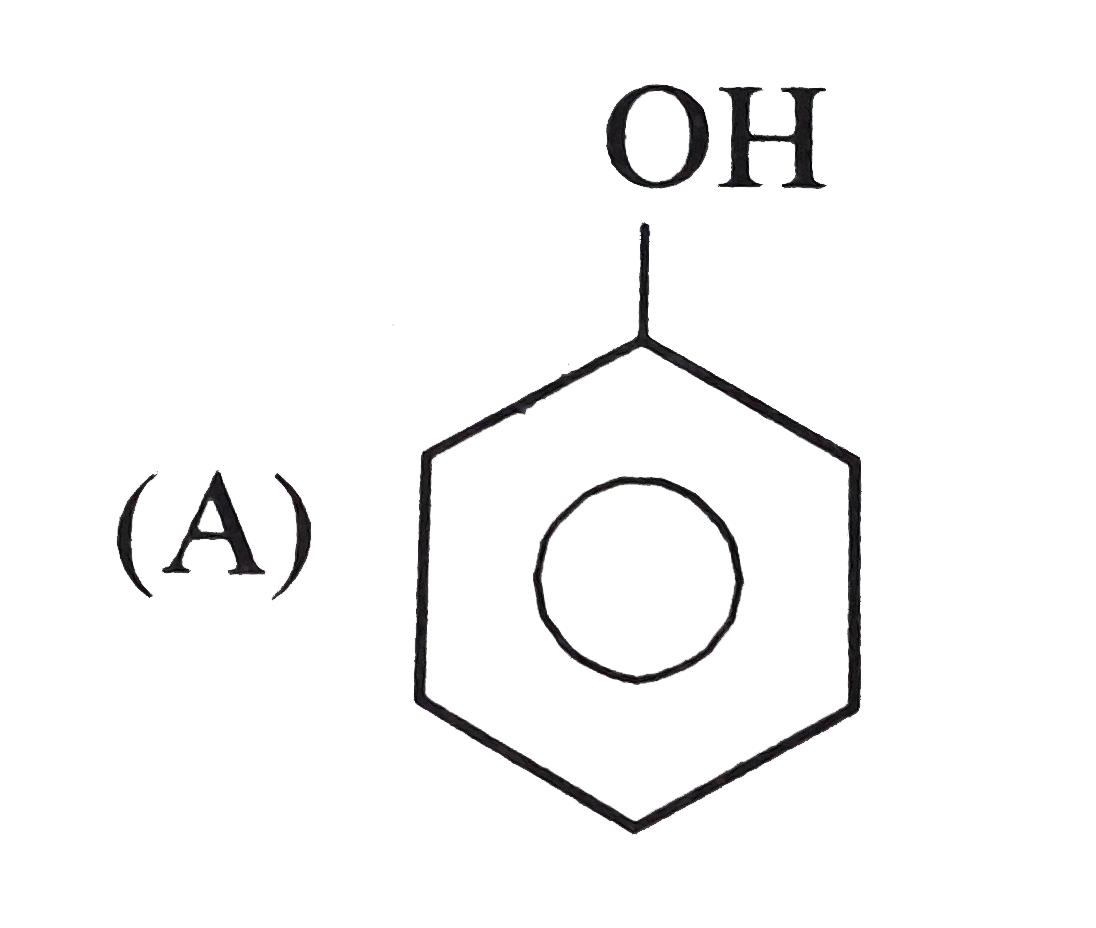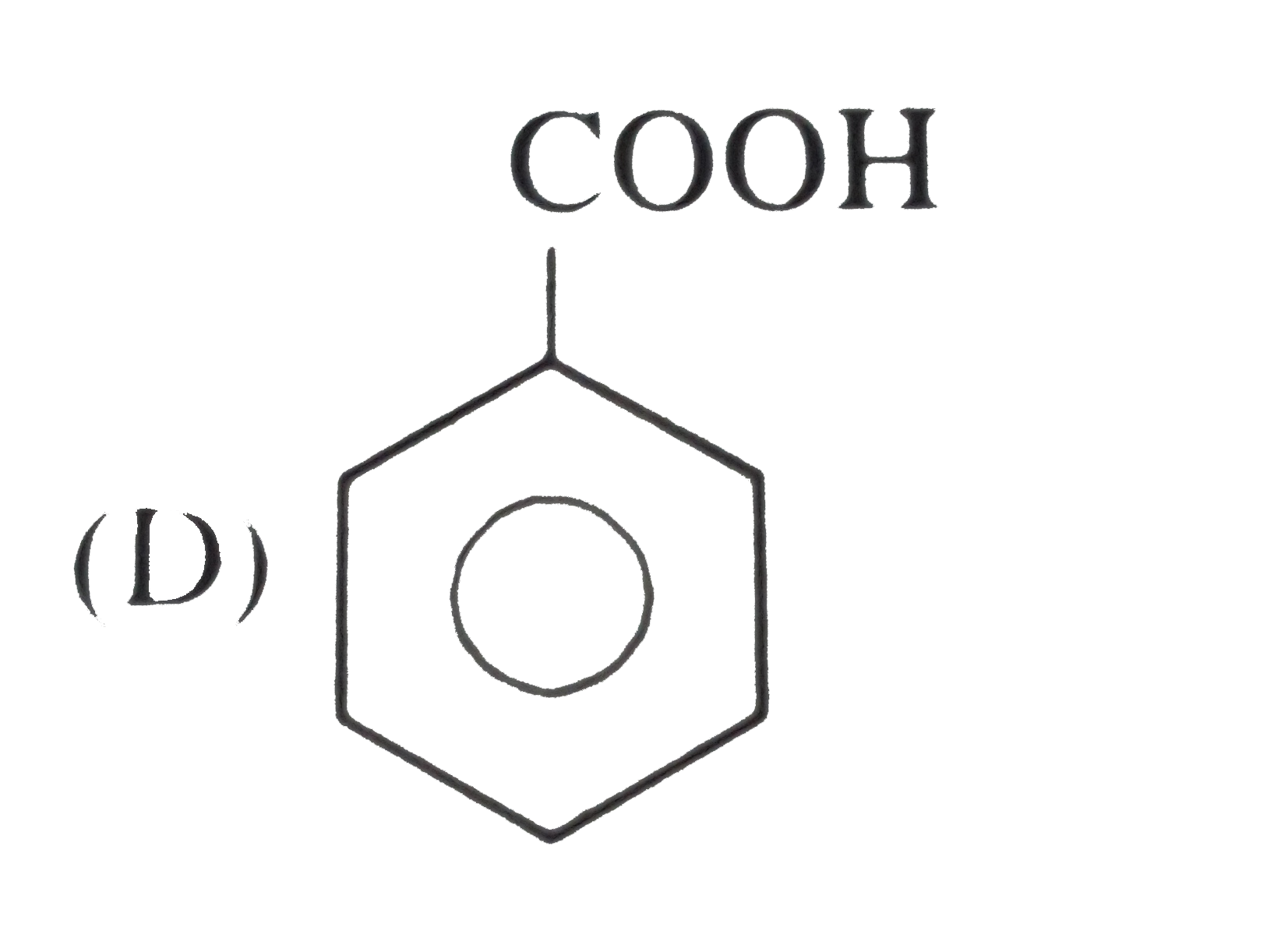Which of the following will have weakest indicated C-H bond?



CH3−H
The correct Answer is:C
To determine which of the given options has the weakest indicated C-H bond, we need to analyze the stability of the resulting carbocation formed when the C-H bond breaks. The stability of the carbocation is influenced by the nature of the substituents on the carbon atom.
1. Understanding C-H Bond and Carbocation Formation:
- When a C-H bond breaks, it can lead to the formation of a carbocation (a positively charged carbon species). The stability of this carbocation will influence the strength of the C-H bond.
2. Identifying the Effects of Substituents:
- Electron-donating groups (EDGs) stabilize carbocations due to their +I (inductive) effect, while electron-withdrawing groups (EWGs) destabilize them due to their -I effect.
- For example, a methyl group (C-H3) is an EDG, while a nitro group (NO2) is an EWG.
3. Analyzing Each Option:
- Option 1: If it has an electron-withdrawing group, it will destabilize the carbocation formed, leading to a weaker C-H bond.
- Option 2: If it has an electron-donating group, it will stabilize the carbocation, resulting in a stronger C-H bond.
- Option 3: If it has a combination of both effects, the overall stability of the carbocation needs to be assessed.
4. Comparing the Stability of Carbocations:
- The more stable the carbocation, the stronger the C-H bond. Conversely, the less stable the carbocation, the weaker the C-H bond.
- For example, a tertiary carbocation is more stable than a secondary, which is more stable than a primary.
5. Conclusion:
- After analyzing the effects of the substituents on the stability of the carbocation formed from the C-H bond, we can conclude that the option with the strongest electron-withdrawing group will have the weakest C-H bond.
Final Answer:
The option with the weakest indicated C-H bond is Option 3.
- When a C-H bond breaks, it can lead to the formation of a carbocation (a positively charged carbon species). The stability of this carbocation will influence the strength of the C-H bond.
- Electron-donating groups (EDGs) stabilize carbocations due to their +I (inductive) effect, while electron-withdrawing groups (EWGs) destabilize them due to their -I effect.
- For example, a methyl group (C-H3) is an EDG, while a nitro group (NO2) is an EWG.
- Option 1: If it has an electron-withdrawing group, it will destabilize the carbocation formed, leading to a weaker C-H bond.
- Option 2: If it has an electron-donating group, it will stabilize the carbocation, resulting in a stronger C-H bond.
- Option 3: If it has a combination of both effects, the overall stability of the carbocation needs to be assessed.
- The more stable the carbocation, the stronger the C-H bond. Conversely, the less stable the carbocation, the weaker the C-H bond.
- For example, a tertiary carbocation is more stable than a secondary, which is more stable than a primary.
- After analyzing the effects of the substituents on the stability of the carbocation formed from the C-H bond, we can conclude that the option with the strongest electron-withdrawing group will have the weakest C-H bond.
The option with the weakest indicated C-H bond is Option 3.
Topper's Solved these Questions
- BOOK - AAKASH INSTITUTECHAPTER - ORGANIC CHEMISTRY: SOME BASIC PRINCIPLE AND TECHNIQUESEXERCISE - SECTION-C OBJECTIVE TYPE QUESTION (MORE THAN ONE OPTIONS ARE CORRECT)18videos
ORGANIC CHEMISTRY: SOME BASIC PRINCIPLE AND TECHNIQUES
- BOOK - AAKASH INSTITUTECHAPTER - ORGANIC CHEMISTRY: SOME BASIC PRINCIPLE AND TECHNIQUESEXERCISE - SECTION-D LINKED COMPREHENSION TYPE QUESTIONS6videos
ORGANIC CHEMISTRY: SOME BASIC PRINCIPLE AND TECHNIQUES
- BOOK - AAKASH INSTITUTECHAPTER - ORGANIC CHEMISTRY: SOME BASIC PRINCIPLE AND TECHNIQUESEXERCISE - ASSIGNMENT SECTION-A COMPETITION LEVEL QUESTIONS50videos
ORGANIC CHEMISTRY: SOME BASIC PRINCIPLE AND TECHNIQUES
- BOOK - AAKASH INSTITUTECHAPTER - ORGANIC CHEMISTRY : SOME BASIC PRINCIPLES AND TECHNIQUES EXERCISE - Assignment(Section-D)(Assertion - Reason Type Questions)12videos
ORGANIC CHEMISTRY : SOME BASIC PRINCIPLES AND TECHNIQUES
- BOOK - AAKASH INSTITUTECHAPTER - POLYMERSEXERCISE - ASSIGNMENT (SECTION-D)13videos
POLYMERS
Similar Questions
Knowledge Check
- Question 1 - Select One
Which of the following is the weakest acid
AHFBHClCHBrDHI - Question 2 - Select One
Which of the following is the weakest bond?
AHydrogen bondBCovalent bondCIonic bondDMetallic bond - Question 3 - Select One
Which of the following is the weakest acid ?
A BCH3COOHCHCOOHD
BCH3COOHCHCOOHD

